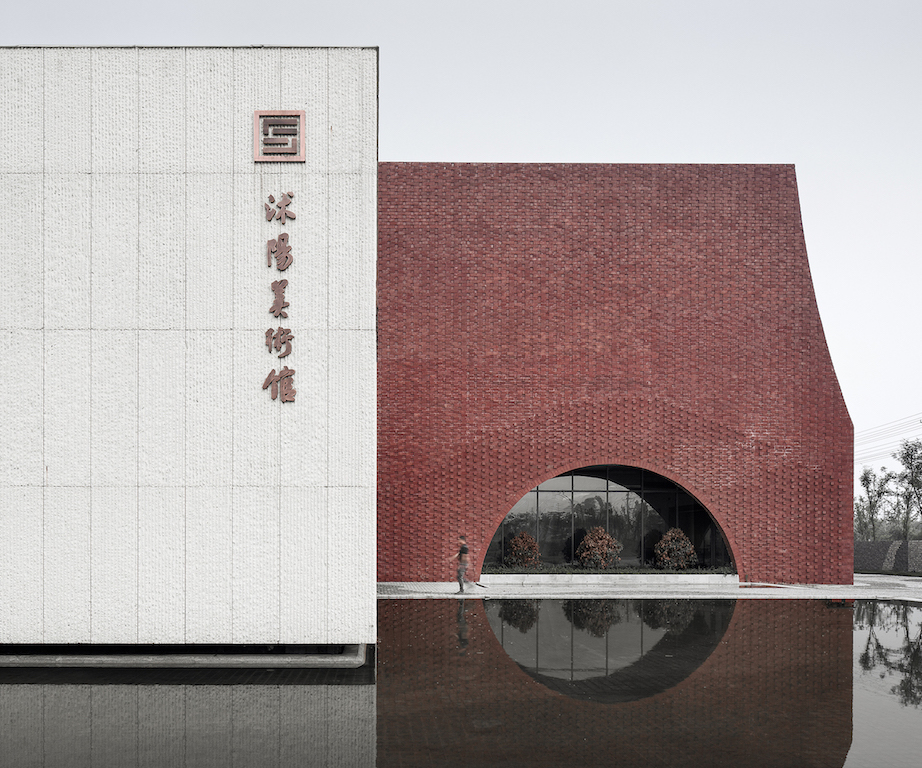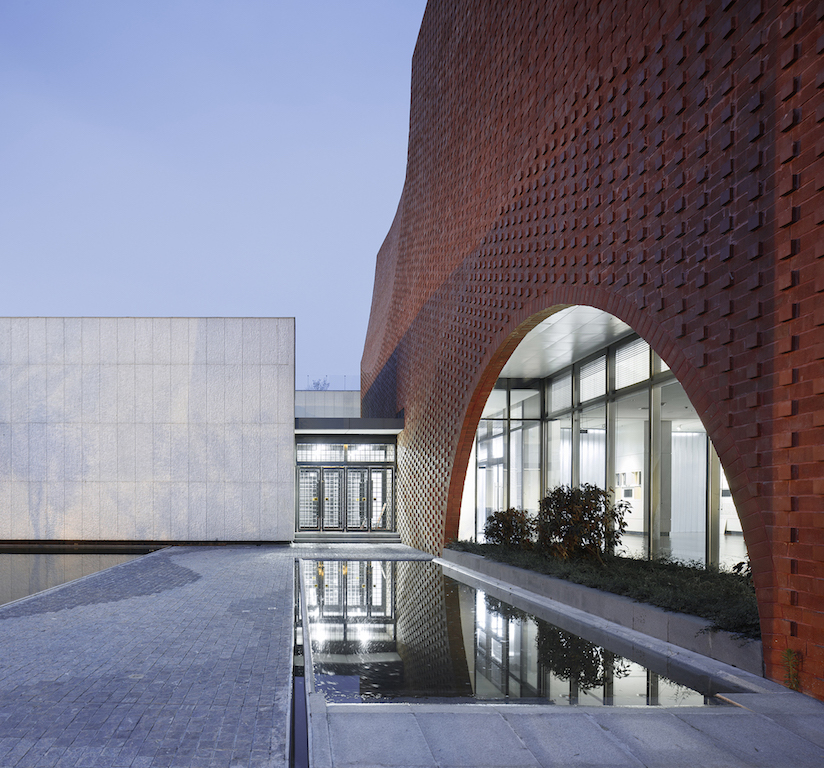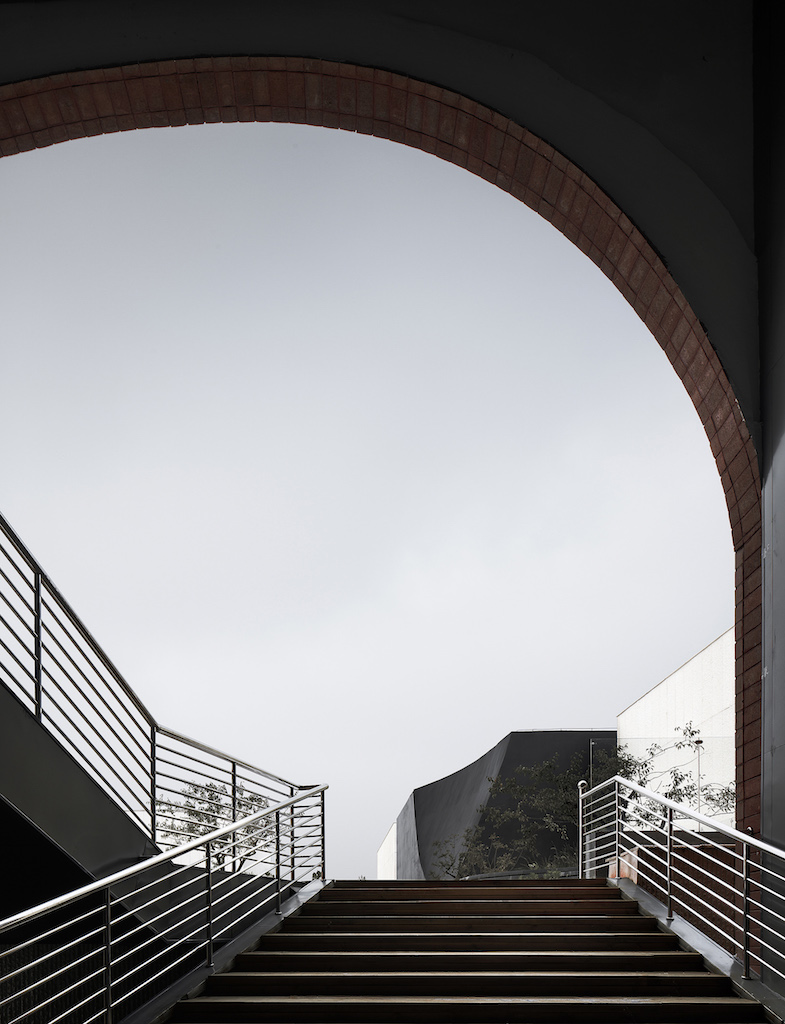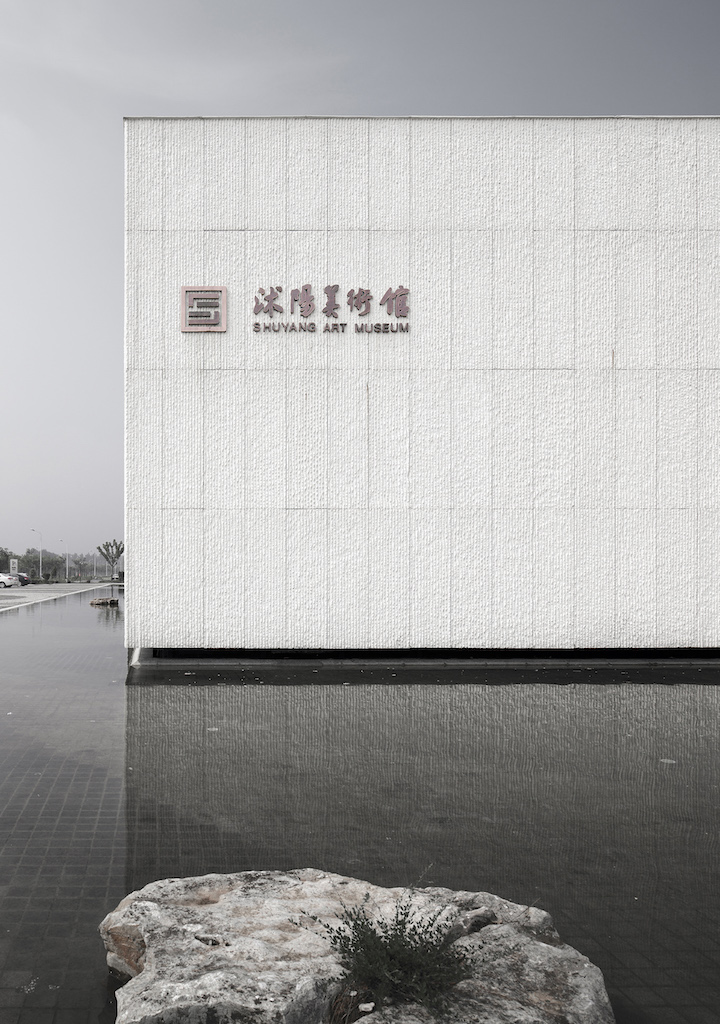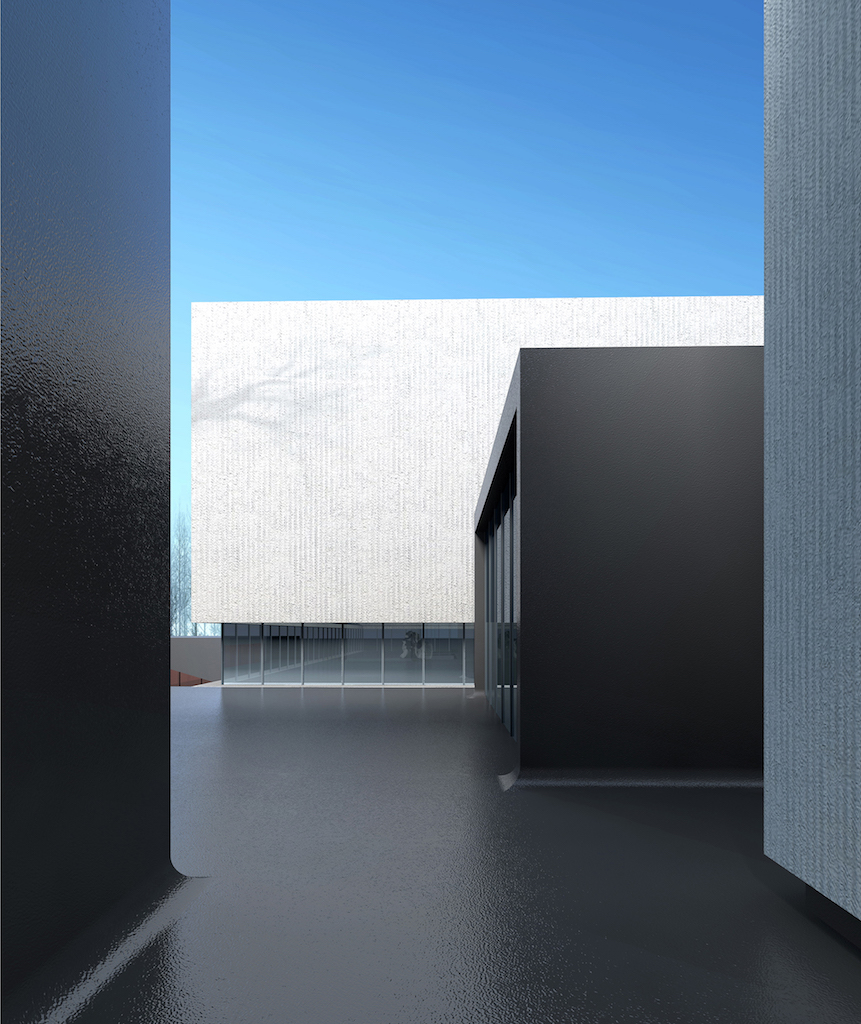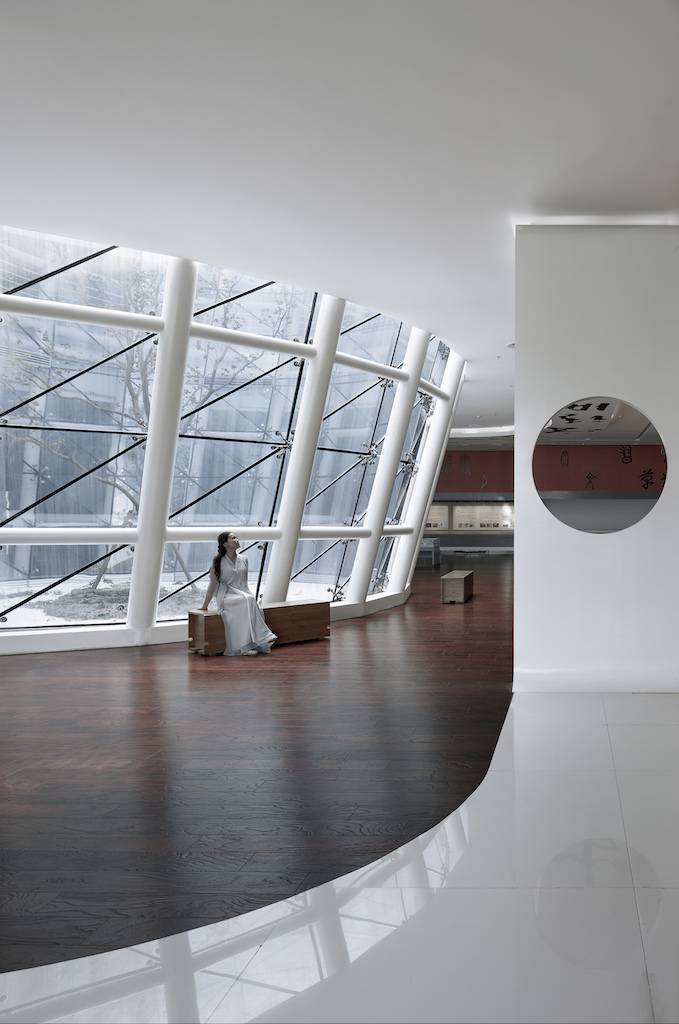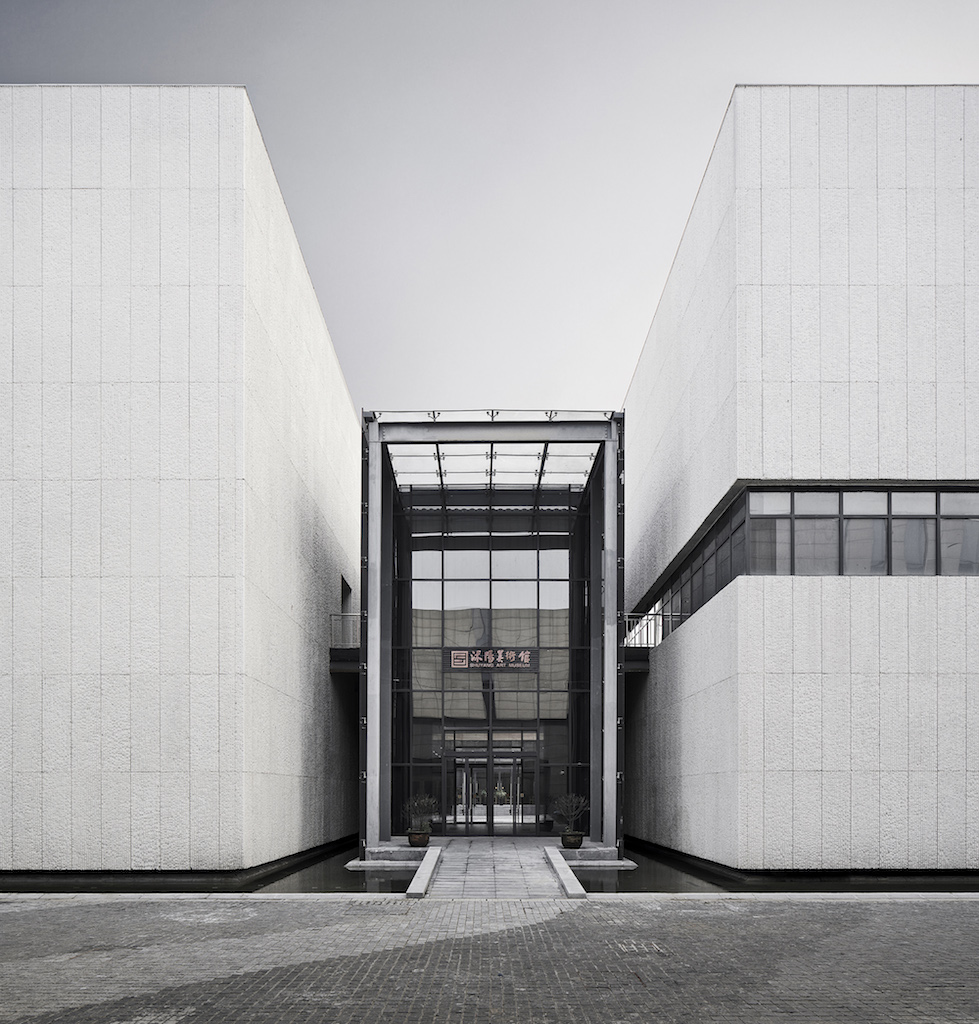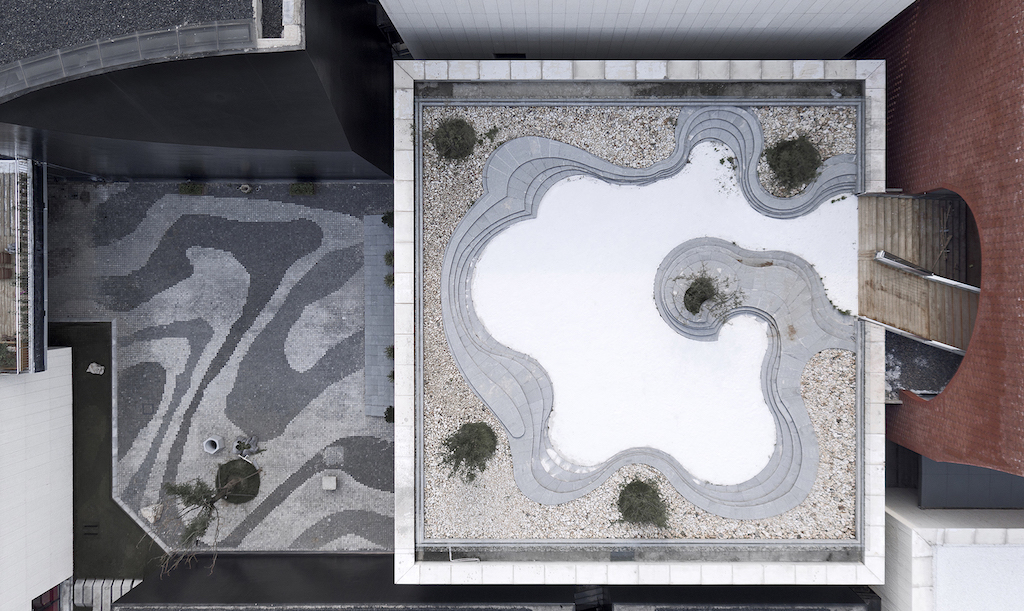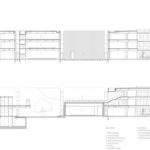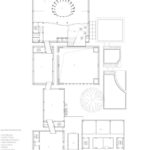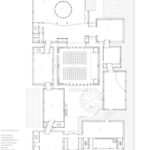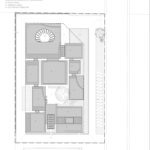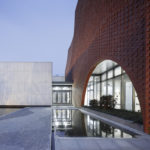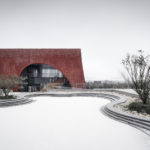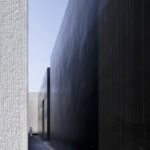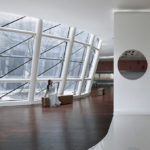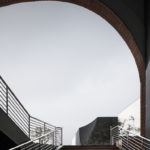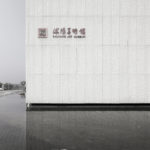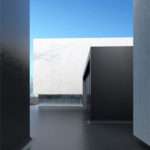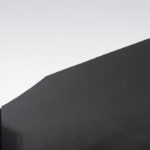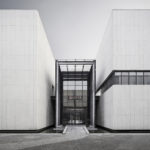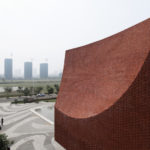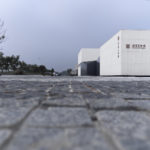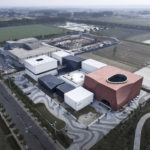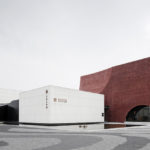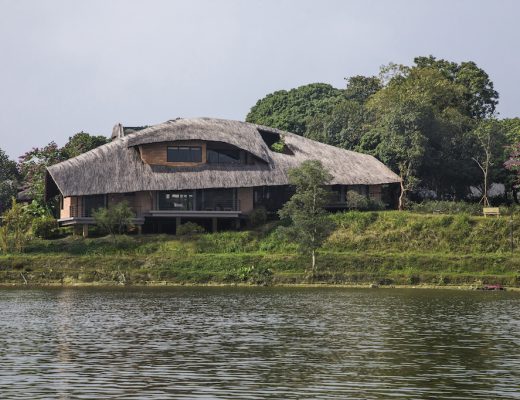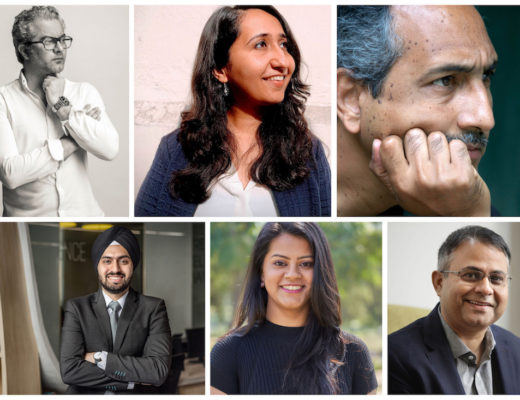Located in the hometown of traditional calligraphy, Shuyang in China’s Jiangsu province, Shuyang Art Museum by The Architectural Design & Research Institute of Zhejiang University Co. Ltd is positioned as the calligraphy art museum to display Shuyang’s calligraphic heritage.
The concept in this project at the intersection of South Nanhu Road and Xueyuan Road draws upon the abstractness of the most fundamental three colours, black, white and red of Chinese calligraphy from rice-paper, brush-pen, seal and creates a spatial experience with primary colours. The aesthetic interest of the calligraphy in the architectural layout referring to Zheng Banqiao’s calligraphic style is to respond to the ideological and practical work, the light and heavy, and the opening and closing of the calligraphy through controlling the size of the building, the space, the contrast of the materials and so on.
The largest exhibition hall along the street has the red-bricked exterior wall, like a condensed seal printed on the elegant scroll of ink and wash. The way of cutting the corner through the arc surface strengthens the iconic character of the building along the street, forming a unique lasting appeal. Red brick is Yixing clay brick, adopting three kinds of lining according to the different locations. The lower brick head support the wall, and the upper part intrudes the wall, and cut part is flatly lined, forming different textures.
The ink volume and angle are cut and painted with dark grey fluorocarbon paint, and the wall presents a subtle colour change in the blue sky, such as the giant stone, and the ink block, with a simple and profound texture. At the bottom of the body, the rounded corners are processed to show the sense of gravity in calligraphy.
The white volume selects prefabricated concrete hanging board, and the surface is treated with vertical chisel, such as rice-paper, which formed delightful contrast to the smooth and fine ink surface. The bottom of the body is overhanging to show a floating state, reflecting the spirit of detachment in calligraphy.
The tranquil water at the entrance is set up to keep off the noise of the outside world, and visitors are introduced into the museum by a bridge on the surface of the water. The continuous transition of space makes the visitors compose the mind quickly before entering the exhibition hall.
All the exhibition halls are open spaces without columns, which can be arranged freely according to the exhibition needs. Glass corridor connects the exhibition halls, in order to facilitate continuous exhibition. In the middle of the red-bricked exhibition hall, there are light wells through three floors, which create bright and transparent indoor space.
The spatial relationship is controlled by the layout of “sparse enough to run horse, dense enough with no needle”. It is close to keep a narrow lane of only two meters wide. Both sides are pure black and white volume, making people feel like walking among books. The space opens out to a courtyard and creates an open space effect。
There is a grey space in the way that the volume of the structure is entrenched in an introverted manner, and the outdoor space can be extended into the indoor rest area. The paved road and roofed courtyards are inspired by the abstract pattern of the ink spreading.
Project details:
Project Area: 10,475m2
Design Scope: Architecture, Structure, Water Supply and Drainage, Electric, Heating and Ventilation, Landscape
Architectural design: The Architectural Design & Research Institute of Zhejiang University Co., Ltd. (UAD) (http://www.zuadr.com/)
Project leader: DONG Danshen
Architecture design: CHEN Jian, NI Jian, CAI Yi
Structural design: WEI Kaizhong, WU Shuai
Water supply and drainage design: Zhou Xin
Electrical design: LI Ping, YE Jin
Heating and ventilation design: PAN Dahong, ZHANG Minmin
Landscape design: CAI Xiao’ang, WANG Hui
See the full image gallery here:
Photos: ZHAO Qiang
You might also like:
Circular form of He Art Museum by Tadao Ando pays nod to traditional Chinese architecture
Taiwanese architecture firm Crox designs a floating museum atop undulating mountains in China
C+ Architects designs ring-like museum surrounded by clouds in China


